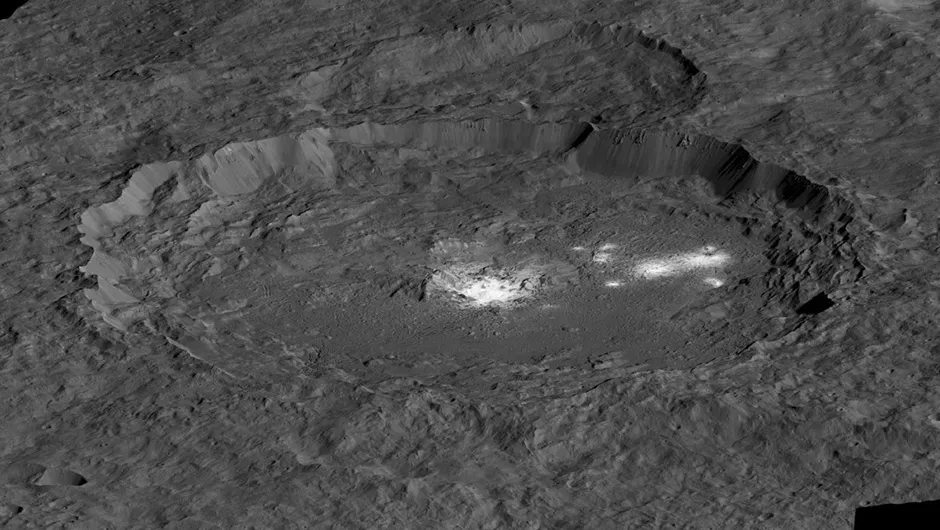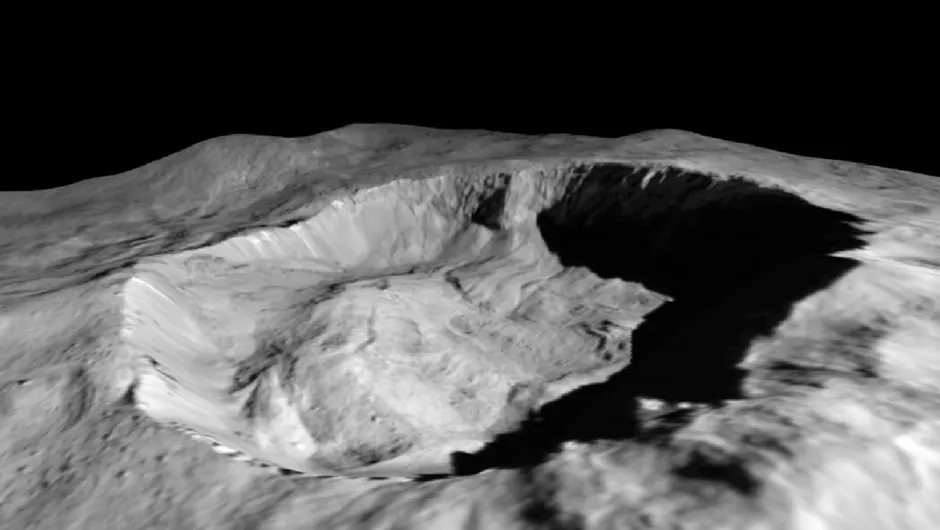A Delta II-Heavy rocket propelled NASA's Dawn spacecraft into space on its journey to the asteroid belt in 2007. Image Credit: NASA
As NASA’s Dawn spacecraft approached the uncharted dwarf planet Ceres for the very first time in 2015, two mysterious bright spots were seen in its Occator crater, leaving astronomers puzzled and enthralled.
This puzzle has been pieced together over the years as Dawn has investigated the dwarf planet, whose home is the asteroid belt between Mars and Jupiter.
Dawn is part of NASA’s Discovery Programme, a mission to Ceres and Vesta, the largest two bodies in our Solar System’s asteroid belt.
Dawn recently dipped down 35km from Ceres’ surface for its final hurrah before its engines stop later this year, returning more breath-taking images of the dwarf planet.

Although more has been discovered about Ceres than anyone was expecting, hopefully Dawn will not be its last visitor.
With an equatorial radius of 476km, Ceres is 13.4 times smaller than Earth.
It is the first dwarf planet to be visited by a spacecraft and was expected to be a barren, inert planet.
Much to the shock of astronomers, an abundance of evidence for water and geoactivity has been observed.
The data sent back to Earth by Dawn has led scientists to believe Ceres is geologically active and that the dwarf planet is composed of a staggering 25 per cent water.
Scientists think that Ceres could be representative of a young Earth frozen in time, a protoplanet whose formation was hindered by Jupiter’s tenacious gravitational pull.

While there has been no evidence of life on Ceres, the dwarf planet could open the window to deepening our understanding of how habitable planets such as Earth form.
Water has been the main point of investigation for the Dawn mission and accounts for the many surprises astronomers faced, such as the bright spots that are peppered over the dwarf planet’s surface, cryovolcanoes, carbonates and a unique water cycle.
The mesmerising spots were established by Dawn’s infrared mapping spectrometer to be sodium carbonate, or salt.
Some believe that Ceres, now covered in a rocky crust, once had a global ocean.
If so, these deposits could be left over from a layer of water that has since sublimated, leaving behind reflective salts.
Or, the salt spots could be due to asteroid impacts, scraping away the dusty crust and revealing the salty ice underneath.
90 per cent of 130 bright spots observed on Ceres are in craters or can be linked to crater debris.
Spectral readings from Dawn’s Gamma Ray and Neutron Detector have opened the door to discovering the mysteries of Ceres.
Hundreds of bright spots have been observed on Ceres, each unique, but characterised by carbonates.
Carbonates such as those found on Ceres are formed when water reacts with carbon rich minerals.
Carbonates can be an indicator of habitability, so their discovery offers more tantalising evidence for the building blocks for life on Ceres.
Water also exists on Ceres in the form of the dwarf planet’s water cycle.
Observations of the Juling Crater on Ceres revealed that surface ice levels vary over time.
They seem to increase during winter and decrease in summer after sublimation. The water vapour from this cycle contributes to Ceres’ thin atmosphere.
Another conundrum Ceres has presented astronomers with is the distinct lack of large craters on its surface.
Considering its position in an asteroid belt for the last 4.5 billion years, one would expect the dwarf planet to be a bit more worse for wear. The largest impact crater is only 280km wide.
It is possible that larger craters may have been dulled out by cryovolcanism, it is thought that hydrothermal activity could have caused cryogenic materials to fill in the old craters, with new smaller craters created after this activity.
Ahuna Mons, now labelled as a cryovolcano, is another by-product of water on Ceres.
Ahuna’s surface features are similar to those of volcanoes on Earth and Mars but with salty water replacing magma; Ceres’ surface temperature can be as low as -140ºC.
For Ahuna to have formed there must be a layer of water or ice beneath the rocky surface and in turn something hot enough below that to melt the ice in order for water and minerals to be forced through to the surface, creating the cryovolcano. The source of this heat is as yet unknown.
Due to its prominent surface features, brightness and low crater density, Ahuna is believed to have been formed recently, in the last billion years. Evidence that Ceres has been active before and may still be active now.
This planetary structure is a stark difference to the inert planet astronomers were expecting to find. Ceres is far from just a rock.